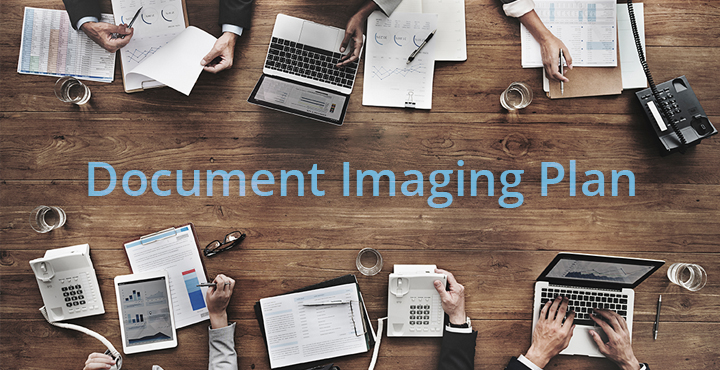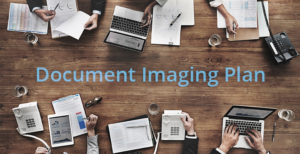
How to plan a successful document imaging project – part 2

In last week’s blog post we kicked-off a four-part series on how to create a best practice plan for your document imaging project. We introduced the following key sections and covered off the first two in our list:
- Overview and Objectives ✔
- Current Situation ✔
- Resource Plan
- Project Design
- Scanning Design
- Post-scan Document Processing
- Change Management
- Project Review
- Budget
As we learned, you need to start with a clear idea why you are embarking on the project. You also need a solid grasp of the business context and the collection of files to be scanned.
We will now dive into the next two sections: the resource plan and the project design.
Resource Plan
A key part of developing your plan is to take stock of the resources available for the project. These resources include staff, space, equipment and supplies. As you do so, you will make one of the most critical decisions about the project: whether to tackle the project in-house or to outsource to a document imaging service provider.
When evaluating your resources, you should consider things like
- The extent of internal experience and knowledge required to manage and execute the project
- Availability of staff to handle file preparation, re-assembly, re-filing, data entry, and quality checks
- Availability of workspaces for preparation, scanning, and file reassembly
- Availability of production-quality scanning equipment, capable of accommodating the volume of files involved
- Supporting equipment and supplies, including barcode scanners, workstations, barcode scanners, file carts, shelving, labeling and folders
The answers to these questions will often suggest whether in-house or outsourced imaging makes the most sense for your organization.
Project Design
In this section, you will outline at a high level how the project will unfold. Here are some of the key details to include:
- What are we imaging? There are many ways to approach imaging. For example, you might be imaging a legacy collection, or you may be imaging newly arrived documents on a “day forward” basis. Or you may do both. For incoming documents, you may decide to image them “in process”, so that the electronic version is available right away for present use, or you may decide to image them “post processing”, as more of an archival function. These types of decisions should flow naturally from the situation analysis and business requirements uncovered in part two of the plan.
- What “level” of file output is required? When deciding what to image, you also need to think about how those documents will be output into the shared drive or records management software. Will the entire contents of a file be scanned as a single image? Or will individual documents in the file each be output into separate images? Be aware that the finer the detail, the more time consuming and expensive the project.
- Who is doing what? The decision about in-house vs. outsourced imaging will have a big impact on this section. Regardless of your approach, you will need to state clearly the various parties involved and the roles that they will play. Don’t forget to include project management and IT resources in your list.
- What is happening when? A preliminary timeline is a great addition to this section, laying out duration of the major phases involved in the project. These phases typically include: planning, document audit, staffing, scanning, file reassembly and return.
- Which resources are required? In addition to the staffing and timing, don’t forget to outline which resources will be required, and when. This list should include company resources that will be booked for the project, as well as items that will need to be purchased.
Next week, in part three of our series, we will explore how to complete the sections on scanning design and post-scan document processing. Read it here »
Next Steps





